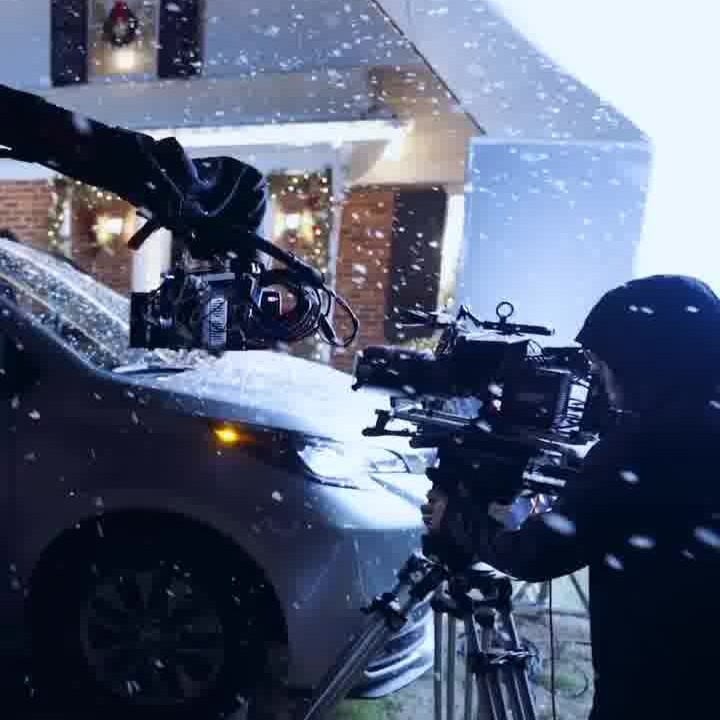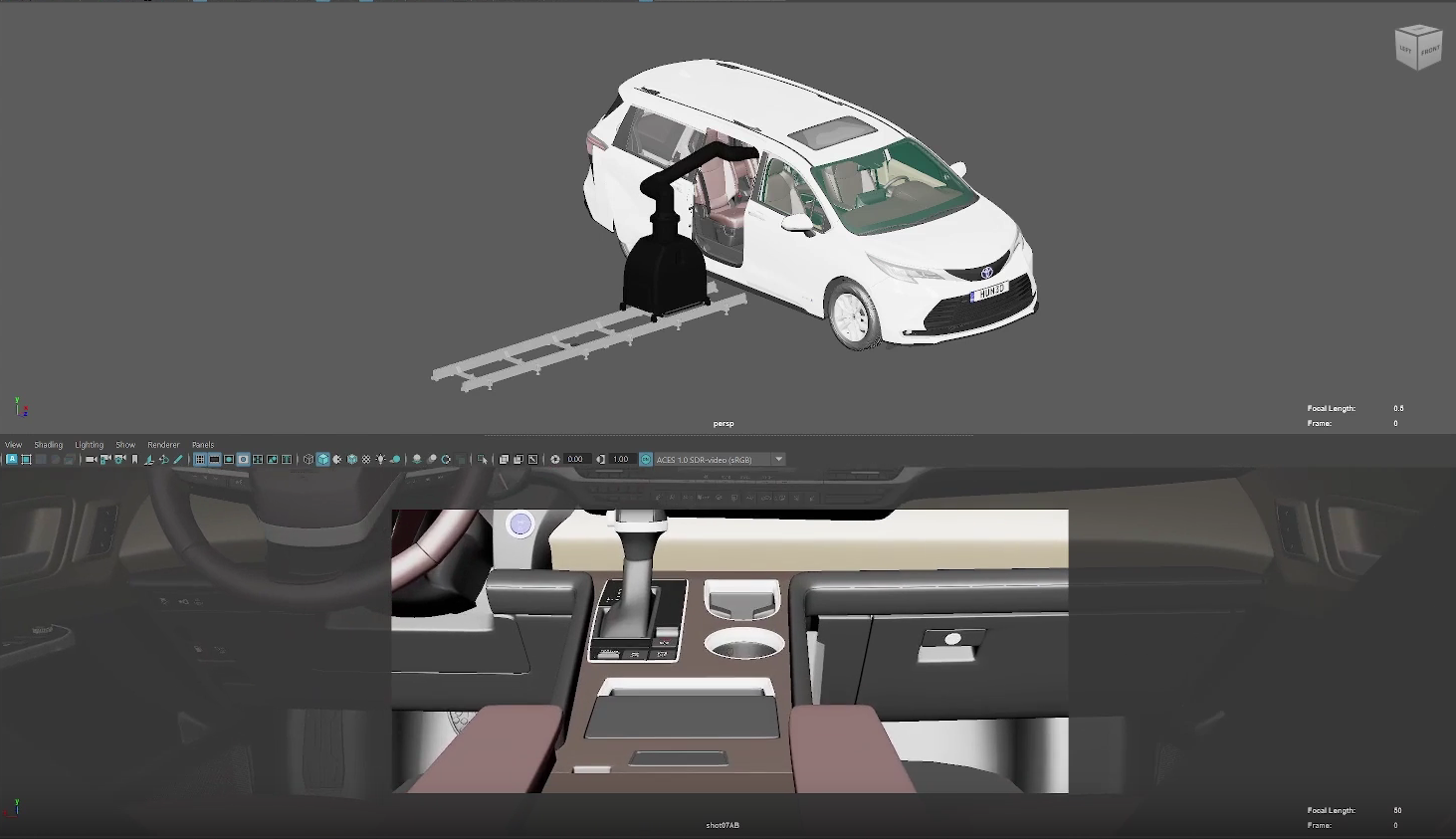A Spark of Holiday Magic (in July)
CASE STUDY
It may not be the holiday season right now, but sometimes great stories have their own timing, so here’s a little Christmas in July for you. The festive spot, captured by Mocolab, follows a magical spark of holiday light as it winds its way outdoors and through an intricately dressed home, all shot using the Cinebot Max over one full-shooting day.
It may not be the holiday season, but sometimes great stories have their own timing, so here’s a little Christmas in July for you. The festive spot, captured by Mocolab, follows a magical spark of holiday light as it winds its way outdoors and through an intricately dressed home, all shot using the Cinebot Max over a single shooting day.
PROJECT OVERVIEW
This creative motion control shoot was created for Virginia Lottery to bring a magical holiday story to life. The spot, produced by The Branching and captured by Mocolab — an Expressway Cinema Rentals Company, showcases a glowing spark of holiday light as it weaves through a cozy home and into a snow-covered minivan, symbolising the magic of the season.
The shoot would need to cover three main locations, including a real house interior, a purpose-built attic, and a snowy yard complete with a small minivan, all within an 18-hour day. Each setup would require repeatable motion control to execute complex VFX passes, including tracking a glowing “spark” as it darted under tables, between presents, through car doors, and more.
The Branching had previously worked with Mocolab on another motion control shoot and liked what they had seen from MRMC Robotics. For this project, Mocolab suggested trying their Cinebot Max, chosen for its long reach, PushMoco® manual movement, and most importantly, its ability to be manoeuvred quickly and simply around set and along track between setups. The question was, would the Max be up for the job?
The DP wanted a shot outside the car, originally they were going to use a dolly and jib, which would have taken an hour. They were looking at the shot, and with the Max having such a long reach, we could gently drag the robot using some plywood. It was so light and durable that it only took 10 minutes instead.
Freelance

THE CHALLENGE
The entire shoot would take place on location, meaning the Cinebot Max would need to be manoeuvred across multiple set pieces, navigating tight indoor spaces and uneven ground outdoors, all while maintaining repeatable, high-speed moves for both live-action and VFX passes.
Many shots would require multiple runs; one with cast and practical lighting, followed by a second pass using a bulb rig to capture the “sparkle” lighting element for compositing in post. Each location would bring its own complexity. The team would need to level outdoor platforms using cherry boards to stabilise the rig on grass for the snow scene, and also navigate the limited space inside the family minivan.
One of the most demanding setups would involve the camera entering through the van’s side door, swinging between the front seats, rotating 90 degrees mid-air, and landing cleanly on a lottery ticket in the centre console — all while carrying a fully built camera package with heavy Hawk and Wolfrick lenses.
The attic, built just off the driveway, would also require high-to-low sweeping moves with very little margin for error. Set elements such as presents, trees, and overhead props would demand a system capable of weaving precisely between obstacles. Most shots would also require multiple passes, first with the actors and then again with the sparkle light rig. Every motion would need to be accurate, repeatable, and ready to run again at short notice. Time was tight, the moves were intricate, and space to operate was extremely limited.
There were a couple of moments where they were ready to take the camera off and go handheld or on sticks, but we never needed to. The Max’s arm is longer than you’d think — we were able to get panel shots through the window, no problem. Having that extra reach, plus how easy it was to move and reset for the next shot, made it perfect for cutting corners and moving fast.
Mocolab
The Solution
The Cinebot Max brought the perfect combination of power, reach, and portability to overcome the shoot’s logistical and technical challenges.
Preproduction planning was key. Operator Josh Treadaway exported the Cinebot Max model from Flair 7 and rigged it into Maya via OSC output, allowing the team to plan complex moves in advance.
Although the Max was designed for reach and height, its lightweight, ergonomic design, along with the easy-to-reposition ‘Cinebot Range Track’, made setup and movement remarkably quick. For outdoor scenes, the team was able to stabilise the rig using plywood sheets laid over uneven ground. Indoors, the robot could be rolled into tight spaces without compromise.
PushMoco® proved invaluable, allowing operator Josh Treadaway and moco-assist Vince Perretti to hand-guide the robot through tight and intricate paths in locations like the attic and minivan. This manual control made it easy to feel out the move in advance, especially in places where narrow clearance and set dressing offered little room for error.

The Cinebot Max’s 1.75m arm and 20kg payload capacity made it possible to glide through the minivan’s side door, rotate mid-air, and land on the centre console with exact precision — all while supporting the heavy camera package. It was a shot that would have been very difficult with smaller rigs or traditional equipment.
Throughout the shoot, the Max operated on just two 1.8m track sections. Its reach and agility reduced the need for constant repositioning. The system’s responsiveness meant that even the most complex moves could be rehearsed, refined, and locked in within minutes, which helped keep pace during the high-pressure 18-hour shoot.
Unlike bulkier, more power-hungry systems, the Max’s compact, battery-powered design reduced crew overhead and made repositioning across multiple locations simpler. That flexibility proved essential on a project requiring studio-grade precision in a real-world setting with limited access to power.
What could have been an overly complex day of setups turned into a cohesive, smooth-running shoot. The Max delivered — and The Branching may just have found a new favourite robot.
